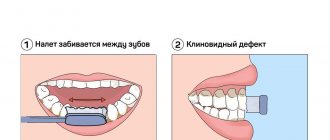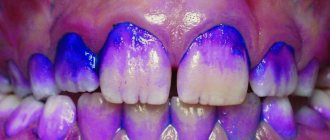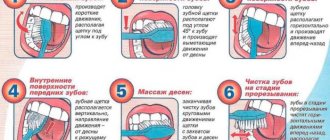The first European who decided to determine for certain the benefits and harms of salt for the oral cavity was Antonie van Leeuwenhoek. In 1674, he invented the microscope and learned that microbes lived in his mouth. After trying to clean his teeth with a cloth with salt, the researcher noticed that the bacteria had disappeared. The scientist liked the achieved effect so much that he continued to use salt until his death, which overtook Leeuwenhoek half a century later at the age of 93. Now, to determine the degree of effectiveness of this method of cleaning the oral cavity, you can use the results of modern research.
Is it possible to brush your teeth with salt?
Salt can be used to clean teeth. It has no contraindications and, when used correctly, benefits the body.
Note! This cheap, natural product has been used to clean teeth since the 17th century.
Plaque is eliminated through the action of abrasive particles. They also help whiten tooth enamel.
An important advantage of such a folk remedy is the absence of an allergic reaction , since it is completely natural.
Cleaning the mouth with salt is a good method for preventing the development of caries and periodontal disease .
The solution can be used as an additional remedy for the treatment of diseases of the oral cavity .
The number and interval of cleanings depends on the sensitivity of the mucous membrane and enamel. The transition to salt cleansing should be done gradually.
At first, it is recommended to use this product for oral hygiene once a week.
Efficiency
Salt prevents bacteria from multiplying. Disinfects the mucous membrane, washes away germs, penetrating even the smallest cracks and cracks, and disinfects the oral cavity. Cleans surfaces thanks to abrasive particles. Lightens enamel by 2-3 tones. Contains beneficial microelements and does not cause allergic reactions or side effects even if swallowed.
As a result of processing, pure salt crystals are obtained
To remove plaque, use sea salt in combination with baking soda.
What is the benefit of such cleaning?
What's the benefit? Salt perfectly eliminates bad breath, cleanses enamel and fights germs. Due to the presence of minerals, teeth are cared for.
Sea salt contains:
- iodine;
- calcium;
- magnesium; fluorine;
- phosphorus.
These same components are present in regular toothpaste, but in salt they are natural.
This product
helps fight tooth decay , which occurs due to pH imbalance and bacteria.
After salt cleaning, the acidity level is normalized and the pH becomes more balanced.
The product has natural antibacterial properties , which are necessary for maintaining oral hygiene.
The positive effect of salt cleansing is whitening. This cleaning method allows you to maintain the natural color of the enamel . Although the effect of such whitening is minimal.
Many dentists are quite skeptical about using such a product as a replacement for the usual toothpaste. However, they do not deny the benefits of salt cleansing.
Dr. Zubastik recommends
Salt is an aggressive ingredient, and it will happily dry out your mucous membranes. Curb it correctly and then you will achieve only positive effects:
- If there is inflammation, bleeding gums and damage to the mucous membrane, do not use salt in its pure form, but prepare a solution: 1 tsp. salt and a glass of warm water.
- The back surfaces are treated with a brush first, then the front ones.
- You need to brush your teeth in a circular, smooth and gentle motion.
- The procedure lasts a maximum of 2 minutes.
- If unpleasant sensations or discomfort appear, stop the procedure.
- After brushing, rinse your mouth with water.
- To avoid injury to the enamel and gums, the cleansing procedure should be alternated with brushing with a paste.
- After cleansing, you should not eat foods with natural dyes, including coffee, for 1 hour.
In this video, Alexander will talk about Professor Bolotov’s method, with which you can treat and apply methods of preventing dental diseases:
By the way, eat more salted fish, this will also help your teeth get rid of caries.
Tags: folk remedies, salt, teeth cleaning
About the author: Dr. Zubastik
Typically, a toothache begins to subside on the way to the clinic and finally goes away after 10 minutes of sitting in line to see the dentist.
- Related Posts
- Why do you need an irrigator and is it needed at all: the pros and cons of the device
- Rating 2022: Best electric toothbrushes
- How to properly brush your teeth with an electric brush?
« Previous entry
How effective is this method?
After a week of using salt to cleanse the mouth, you can notice the first result .
Keep in mind! The effect of use is the following changes:
- gums stop bleeding;
- the enamel becomes a little lighter ;
- bad breath disappears .
Salt is a good antiseptic, so it can be used to prepare a rinse solution.
Despite the fact that this cleaning method is quite effective, you should consult a specialist before using it, as this procedure has its drawbacks.
Consequences of not brushing your teeth properly
Proper and timely cleaning of dental plaque is protection against oral diseases.
If you neglect it, the consequences will only increase: • Tartar forms. It gives off an unpleasant odor. If you do not carry out ultrasonic cleaning, it will become a favorite place for bacteria. • Bacteria will destroy the enamel. The abundance of pathogenic microorganisms quickly leads to caries. • Bacteria will cause your gums to become inflamed. Soft tissues are no less sensitive to them than hard ones. And this means bleeding, swelling and an unpleasant odor.
Possible complications are also worth mentioning. Caries develops into pulpitis, which requires removal of the nerve. This deprives the tooth of nutrition, as a result of which it sooner or later collapses. Progressive gingivitis is fraught with periodontitis and periodontal disease. Lack of oral hygiene leads to tooth loss. Restoring them is more expensive than the cost of a brush, paste and professional cleaning. Therefore, it is better to remember these simple rules and follow them.
What's the harm?
If you do not follow the cleaning technology, you can harm your tooth enamel.
You should know! If you press too hard on your toothbrush, you can damage the enamel and cause pain in your gums.
Frequent salt cleansing can lead to thinning of the top layer of teeth.
If tooth enamel is damaged, brushing your teeth with salt or salt-based paste can cause pain.
Is it possible to remove tartar at home?
On the Internet and in printed publications you can find many recipes for removing stones yourself at home. This includes a mixture of black radish with lemon juice, decoctions of walnut bark, and other incredibly practical remedies that can be found in any garden.
But the problem is that they practically don't work. Decoctions of herbs and plants can have a positive effect on the soft tissues of the oral cavity, yes. But they won’t be able to cope with mineral deposits. Daily brushing will help remove bacterial biofilm, but not tartar. Attempts to soften mineral plaque with acid, as was done 25-50 years ago, will also not lead to anything good and can cause pain in already inflamed gum tissues and increase the sensitivity of the enamel.
Mineral tartar, unfortunately, cannot be completely removed at home. Not strawberry paste, not a mixture of black radish with lemon, not walnut bark decoctions, not soda, not a swab with hydrogen peroxide. Not a single one, even the most advertised brush or paste, can destroy mineral structures. But scratching, erasing healthy enamel or causing its increased sensitivity is quite possible.
The only effective and safe way to remove mineral plaque (tartar) from the surface of the enamel is to consult a dentist.
Cleaning technology and sequence
Need to know! There are several technologies for salt cleansing of tooth enamel.
First cleaning method:
- You should take a little ground salt and put it under your tongue. Saliva will soften all the sharp edges of the crystals and the risk of damaging the enamel will decrease.
- The resulting pulp is spread on a toothbrush with soft bristles.
- It is necessary to walk along the entire dentition , performing vertical movements from the gums to the chewing or cutting part of the crown.
- You need to clean quickly ; if you stay in one area for a long time, you can injure the enamel.
The second cleaning option involves mixing a pinch of salt with toothpaste .
It will help reduce the abrasive effect on the enamel and make the procedure more convenient.
The paste with salt will not foam much and this is normal.
salt with soda and lemon juice.
Baking soda will only increase the abrasive effect, and lemon juice makes teeth more sensitive.
Important! For the first procedures, it is recommended to abandon the brush and use your finger. Subsequent cleanings can be carried out with a brush, but with minimal pressure.
Combined with soda
To do this, mix the ingredients in equal quantities. Then wet the brush, dip it into the mixture and brush your teeth as usual, without pressing hard on the surface.
Step 1
Step 2
Step 3
Step 4
Large grains can be placed under the tongue and wait until it dissolves. At the same time, saliva will begin to be intensively produced. After complete dissolution, take a brush and brush your teeth.
Recipes with salt
Based on this product, you can prepare a medicinal paste with the addition of dried banana skins, olive oil and pine needle extract.
Such a cleaning composition will not only remove plaque and clean the oral cavity, but also strengthen the structure of the roots.
You should take into account the fact that banana skins can be chemically treated, and this will not benefit the body.
To get rid of stone and plaque complications, it is recommended to use a composition based on:
- salt;
- eucalyptus leaves;
- olive oil.
Keep in mind! Combining heated sea salt with crushed eggplant gives a good effect.
This mixture should be applied to the teeth and gums; it helps get rid of many dental diseases.
To increase blood circulation and treat periodontal disease, you can use a mixture of salt with clay and ground red pepper.
Due to the fact that salt is a completely natural product, it
can be mixed with various herbs and other natural ingredients.
You can make homemade pasta using salt. The calcium tablet must be crushed into powder and mixed with the main component.
Water is gradually added to the resulting mixture until it becomes a paste. You can add a small amount of regular paste.
When cleaning with this product, you need to be very careful so as not to injure your gums.
Medicinal decoctions
Perhaps the most advertised remedy is sage. No wonder, since the effectiveness of this herbal infusion is beyond doubt. You can purchase packages of sage at most pharmacies. To make a sage infusion, you need to take five tablespoons of this herb and pour a glass of boiled water. It is necessary to rinse the mouth with a warm solution, and then apply a cotton wool, which has been previously moistened in this infusion, to the large tooth.
Plantain tincture also has a positive effect. This type of plant life has high disinfectant properties, which will come in handy when toothache occurs. You can prepare your own solution for toothache. This herb should be collected and dried in advance (it is widespread in our country). But it can also be purchased in pharmacies in dried form.
Reviews
Below are some reviews. If you have something to say, leave your feedback in the comments below the article, it will be useful to our readers.
Valeria
I have been periodically brushing my teeth with salt for six months now. First I mixed it with paste. The doctor advised using salt for cleansing no more than once a week.
After such cleanings, I noticed that the enamel became whiter, and the teeth themselves were less sensitive to cold and hot.
The doctor also advised periodically using a saline solution to rinse the mouth.
Sofia
I have long wanted to try salt brushing, but I was afraid that it could harm tooth enamel.
Before carrying it out, I consulted with a doctor, he recommended not to get carried away with this procedure and under no circumstances combine such a product with soda or lemon juice.
The first time I brushed my teeth with salt and a small amount of toothpaste. Over time, I just switched to salt gruel. I carry out this procedure several times a week.
Classic application
Sea salt is better suited for this recipe, as it is rich in iodine. But you can use cookware. In any case, select fine salt, otherwise you will have to additionally crush it in a coffee grinder.
Cleaning scheme No. 1:
- wash your hands with soap;
- sprinkle salt on your fingers;
- Gently rub the surfaces on all sides.
Cleaning scheme No. 2:
- put a little salt on your tongue;
- wipe teeth from the outside and inside;
- rinse your mouth.
During the first procedures, painful sensations will appear. But after 3-4 cleanings they will go away.










